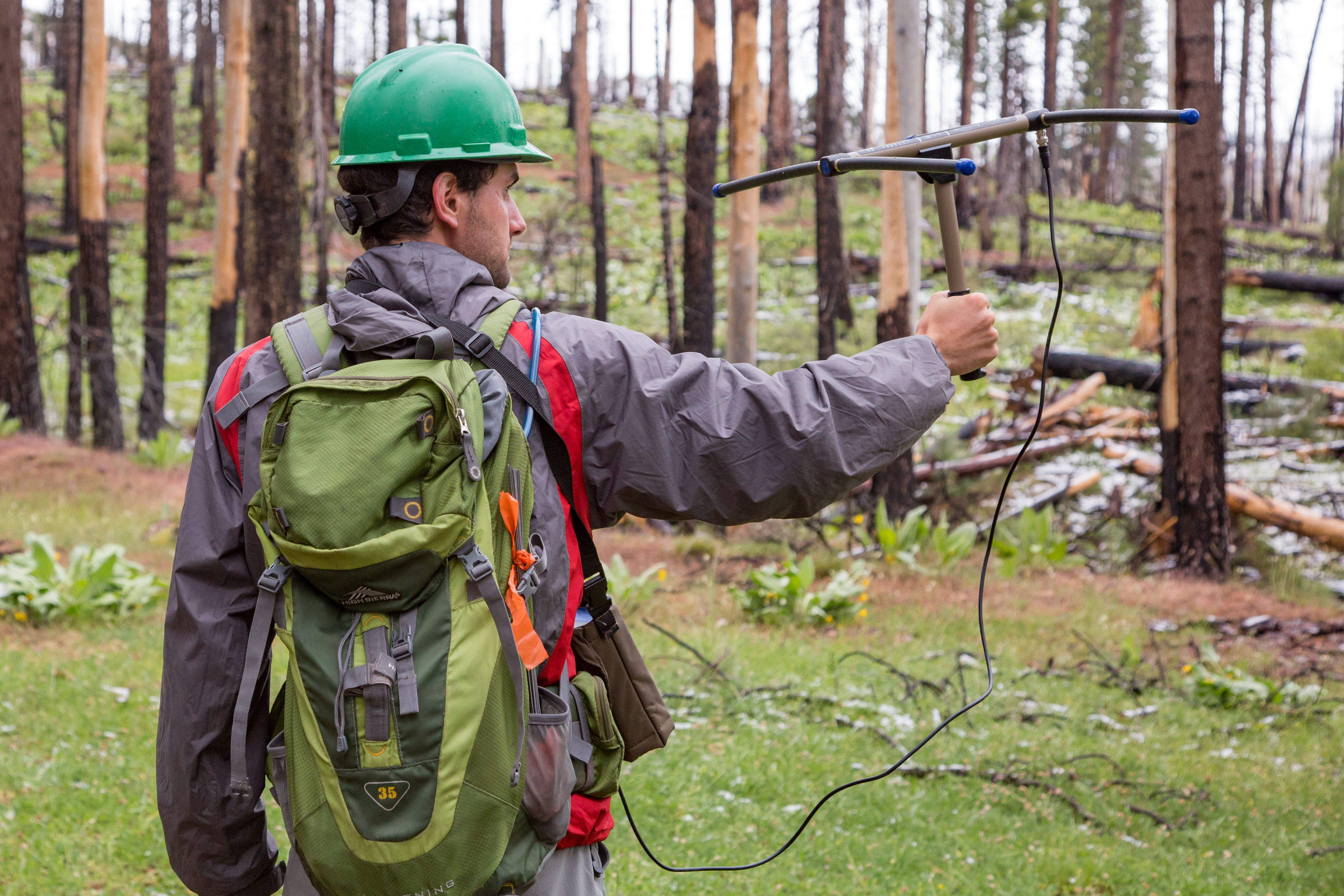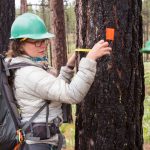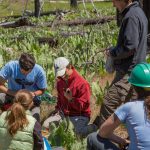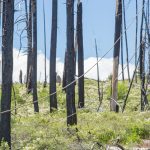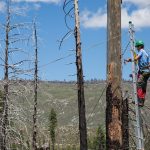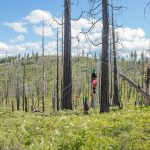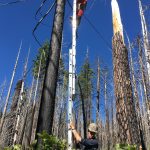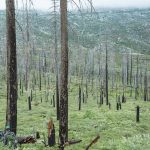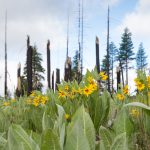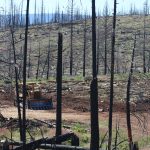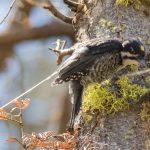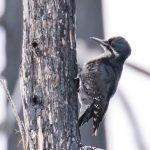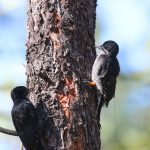As wildfires become more prevalent and more severe, these ‘megafires’ are not only deadly and destructive, they may also negatively affect wildlife species that depend on habitat that lies in their wake, according to new research published in the Journal of Applied Ecology by UConn researchers working with the Institute for Bird Populations and the U.S. Forest Service.
“Globally, and especially in the American West, we see a trend toward fires becoming larger and more severe,” says Andrew Stillman, a Ph.D. student and lead author of the study. “Unfortunately, these fires are becoming the new norm, due to a combination of drought, fire suppression, forest pests, and the effects of climate change.”
Assistant professor of ecology and evolutionary biology Morgan Tingley and explains that some species are dependent on wildfires. The black-backed woodpecker, for example, feeds on beetle larvae that bore into the trunks of dead trees left standing after a severe fire. Groups of these skeleton-like trees are called ‘snag forests.’
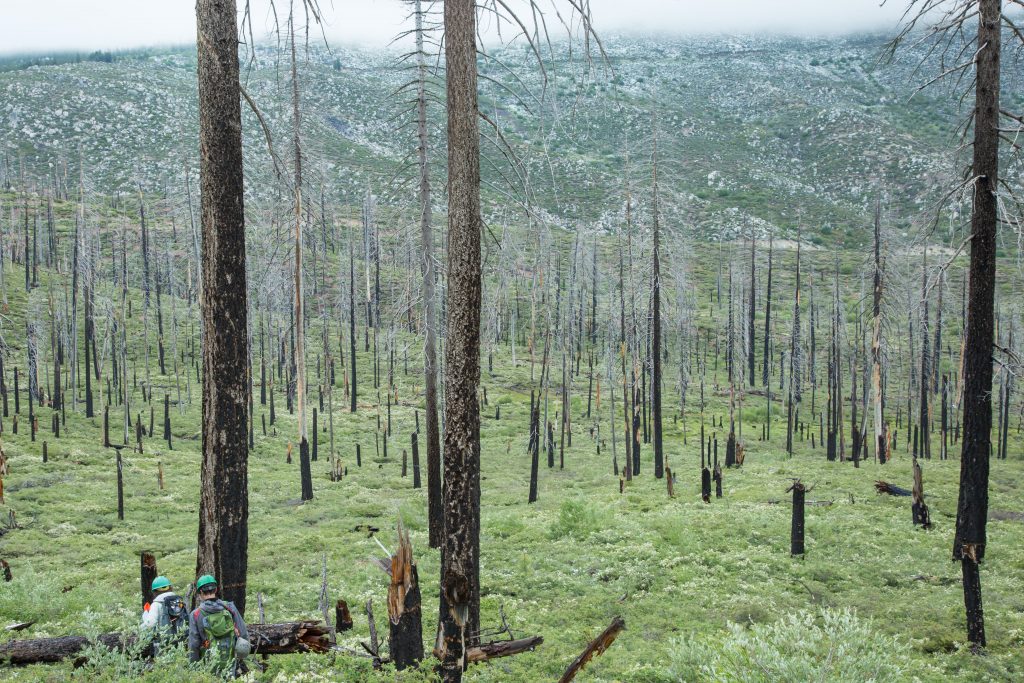
“When a fire burns hot and moves across the landscape, it leaves behind a forest of snags that provide a feast for beetles and their grubs, which in turn are food for larger animals,” Stillman says.
“It’s a good thing when a fire burns at a diversity of intensities,” he adds, “because it leaves behind a variety of habitats.”
Megafires, on the other hand, are exceptionally large, intense fires that create uniform landscapes of burned habitat.
The beetles that black-backed woodpeckers prefer to feed on live in the wood of dead or dying trees, which makes burned forest the ideal place for the woodpeckers to forage. The birds are considered a keystone species – one that numerous other species depend on, and often vital for the habitat – because they excavate holes in trees to use for nests. These same holes later enable other birds to nest, once the black-backed woodpeckers vacate the tree.
Stillman says the beetles seem to seek out recently burned trees.
“The beetles come in very rapidly after the fire,” he says. “We’ve heard accounts from firefighters who have watched swarms of beetles coming in and laying their eggs in trees that are still warm from fire.”
Black-backed woodpeckers prefer forests that are burned just right – not too hot, not too cold. — Andrew Stillman
Soon the black-backed woodpeckers follow, seeking out the beetle grubs to feed on, and they also excavate trees to make nests for their young. “Black-backed woodpeckers are an enigmatic species that loves recently burned forests,” says Tingley. Since they thrive on recently dead trees, they might be expected to love huge, severe fires, where every tree has been killed. “What we found, however,” he adds, “is that it is not that simple.”
Stillman says megafires result in vast, uniform landscapes of burned habitat with less diverse landscapes. “Essentially, there is no cover left for young woodpeckers to hide from predators,” he says.
Black-backed woodpeckers prefer forests that are burned just right – not too hot, not too cold – but these preferences appear to shift, depending on what stage of life the particular bird is in. Stillman says juveniles seem to prefer more cover, probably to protect them from predators that hunt from high above, so they can be found in areas that have not been burned as intensely. On the other hand, adults prefer snag forests with burned – but not too far deteriorated – trees, for foraging.
In other words, the population of black-backed woodpeckers benefits from fires that yield pyrodiverse habitats – areas that burned at various different levels of severity.
“In general, more species benefit when there is greater diversity in habitats,” Stillman notes. “A major benefit from pyrodiversity is that it provides variation in habitat that benefits a wider array of bird species. This research shows that more fire is not always good, and that even post-fire specialist species have a limit to what they can take.”
A structurally diverse post-fire forest will support a more diverse animal community. If grubs are the hamburger meat of the forest, a post-fire forest is a veritable feast for woodpeckers and other species that need these habitats.
The researchers also note that post-fire management strategies can help create more diverse landscapes. And in a time of growing fire intensity, post-management strategies may be crucial going forward,
The study’s findings also have significant implications for management practices that aim to support biodiversity in fire-prone areas while balancing the economic needs of timber supply.
Post-fire forests are sometimes logged very heavily after a fire burns. “For the species that depend on burned areas, logging can remove the unique habitat these species need to survive, Stillman says. “But humans have the ability to determine which areas are affected the most by logging activities. Should we take timber from areas burned at high severity or low severity? This paper really informs that debate.”
This study was made possible by funding from Plumas National Forest, the Pacific Southwest Region of the U.S. Forest Service, and the UConn EEB Zoology Award (2016, 2017).
